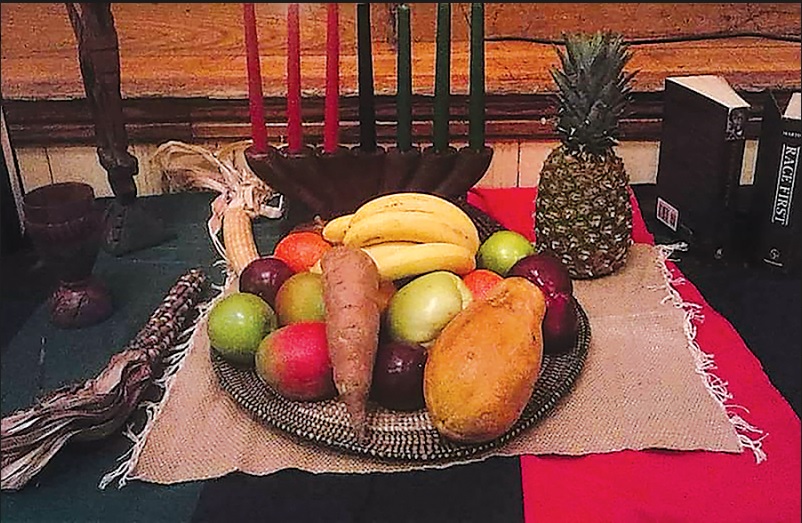The seven symbols and principles of Kwanzaa: the meaning behind the annual african diasporic celebration
December 7, 2021
Dr. Maulana Kaenga, a professor of Black Studies at California State University, created Kwanzaa after the Watts riots in 1966. The maltreatment of black citizens by the police and the government, high unemployment and inferior living conditions led to six days of unrest, leading to 34 deaths and 40 million dollars’ worth of property damage.Kwanzaa is a way for the African American community and the surrounding African diaspora to celebrate and heal together.
The National Museum of African American History and Culture and the Official Kwanzaa Website define Kwanzaa by seven principles and symbols. Translated from Swahili to English, the first principle is “Umoja,” or “Unity, to strive for and maintain harmony in the family and community.” The second principle is “Kujichagulia,” or “self-determination, to define, name, create and speak for ourselves.”
The following principle is Ujima or “Collective Work and Responsibility, to foster and maintain our community and solve problems together. Ujamaa or “Cooperative Economics,is the pledge to maintain our stores and business to profit from them together.” Nia is the principle of Purpose, “to make it our mission to build and develop our community to restore our people to their traditional greatness.”
Kuumba is the principle of creativity, “to do as much as we can to leave our community more beautiful and beneficial than we inherited it.” The final principle of Kwanzaa is Imani or “Faith” “to believe in our hearts our people and the righteousness and victory of our struggle.”
The Seven Symbols stand for values and concepts of African culture and contribute to building and reinforcing the seven principles. For example, Mazar or crops are symbolic of African harvest celebrations and productive and collective labor rewards.
The Mkeka or placemat is made from straw directly from Africa and represents tradition and history, “the foundation of which we build.” Foods such as nuts, fruits and vegetables are placed on the Mekeka representing hard work. Finally The Muhindi or Ear of Corn is symbolic of children and the future they embody.
The Kikombe cha Umoja or Unity Cup is parried with a libation ritual and is passed around for each family member and guest to drink from; it is symbolic of unity. The Mishima or seven candles correlate to each principle and are lit on which principle is celebrated. These candles sit in the Kinara or candle holder made from wood directly from Africa, further solidifying the roots of continental Africans to the rest of the African diaspora.



